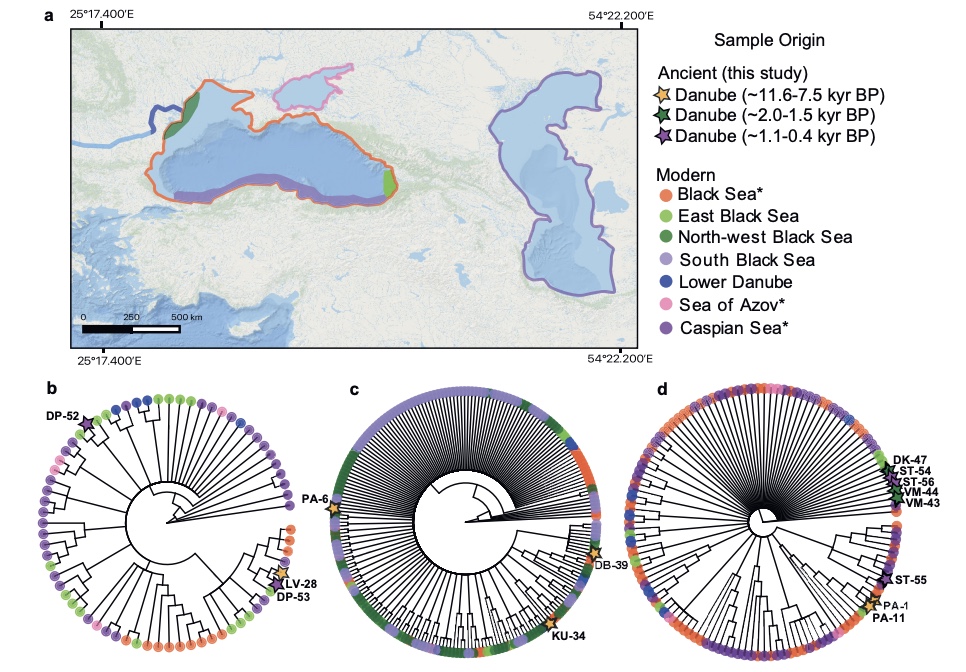New Study Reveals Continuous mitochondrial diversity of Danube sturgeon species over millennia
Sturgeons, iconic, culturally significant, and ecologically vital fishes, have long shaped human economies and ecosystems in the Danube basin. Yet today, these species are in peril: several are locally extinct, and others have suffered drastic declines since the 19th century due to overfishing, habitat loss, and pollution.
A new study featured in the theme issue “Shifting seas: understanding deep-time human impacts on marine ecosystems” explores the deep history of sturgeons in the Danube, using ancient DNA from archaeological specimens spanning nearly 10,000 years. Sturgeon exploitation in the Danube dates back at least 11,600 years, and ancient DNA analyses reveal that beluga, Russian, and ship sturgeons once exhibited high genetic diversity. Shared genetic signatures between ancient and modern beluga and Russian sturgeons indicate a long-term continuity of these populations over millennia. This study also represents the first high-coverage sequencing of ancient sturgeon mitochondrial genomes, paving the way for further aDNA research on sturgeons and informing future conservation efforts.
These findings offer a rare genetic window into the deep history of human–sturgeon interactions and highlight the resilience and vulnerability of these remarkable fishes.
Read the article HERE

Related Articles
Oceans Past XI: Call for Abstracts and ECR funding award submissions is now open!
Call for Abstracts and ECR funding award submissions is now open!Deadline: 19 December 2025 The Oceans Past Initiative connects scholars and practitioners interested in documenting and understanding changes in marine systems and human-ocean interactions in past...
Announcing OPI XI: Vancouver Island, Canada 15-19 June 2026
Oceans Past XI: Coming in 2026Dear Members and Friends of the Oceans Past Initiative, We are delighted to announce the dates for our next conference, which will be hosted at the University of Victoria, Vancouver Island, Canada. Oceans Past XI: Ocean-connected...
Ancient Isotopes Reveal Pre-Lessepsian Invasions and Recent Overfishing in the Levant: Insights from Holocene Fish Remains
Ancient Isotopes Reveal Pre-Lessepsian Invasions and Recent Overfishing in the Levant: Insights from Holocene Fish RemainsIn our latest paper in the journal Mediterranean Marine Science, “Pre-Lessepsian isotopic niche spaces: using paleoecological proxies to assess...




